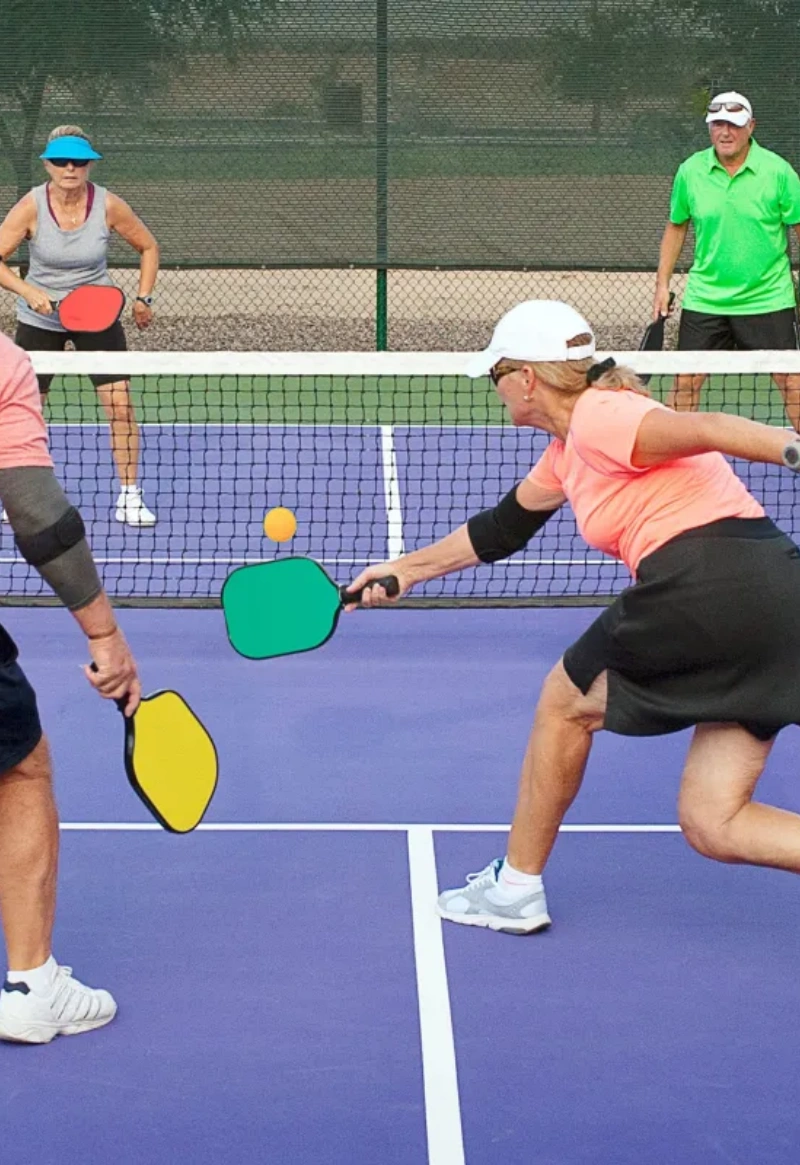![Female pickleball player making a low shot in a competitive match]https://nexpickleball.com/wp-content/uploads/2025/03/Pickleball-tournament-action.webp "Pickleball tournament action")
Pickleball paddles vary in quality, performance, and suitability. Choosing the right one can be overwhelming, but selecting the best paddle can transform your game.
The best pickleball paddles offer a balance of control, power, and durability. Factors like core material1, weight, and surface texture2 impact overall performance.
Understanding what makes a paddle the best will help you make a more informed purchase. Let's explore the top-rated paddles, what pros use, and how to choose one.
What is the #1 rated pickleball paddle?
Many paddles claim to be the best, but performance, technology, and user feedback determine the true winner.
The JOOLA Ben Johns Hyperion CFS 16 is often considered the #1 rated pickleball paddle, known for its spin control, durability, and power.
Factors that determine the #1 rated paddle
The best paddle must meet specific criteria, including:
| Factor | Importance |
|---|---|
| Control & Spin | Helps with precise shots and accuracy |
| Power & Drive | Ensures strong, offensive play |
| Durability & Material | Affects longevity and performance |
| Weight & Balance | Impacts maneuverability and comfort |
The JOOLA Ben Johns Hyperion CFS 16 excels in these areas, making it a favorite among competitive players. However, preferences vary, and the "best" paddle depends on individual playing style.
What paddle do most pros use in pickleball?
Professional pickleball players require paddles that maximize their strengths and provide an edge in competition.
Most pros use high-end paddles from brands like JOOLA, Selkirk, Paddletek, and NEXpickleball3, designed for precision, power, and spin.
Top paddles used by pros
| Player | Paddle Model |
|---|---|
| Ben Johns | JOOLA Ben Johns Hyperion CFS 16 |
| Tyson McGuffin | Selkirk Power Air Invikta |
| Catherine Parenteau | Paddletek Bantam TS-5 |
| Anna Leigh Waters | Paddletek Bantam EX-L |
Professional paddles often feature composite materials4 (such as carbon fiber and fiberglass) faces, polymer cores, and specialized textures for spin. While these paddles suit elite players, they may not always be the best for beginners or casual players.
Is there really a difference between pickleball paddles?
Many players wonder whether paddle differences are noticeable or just marketing hype.
Yes, pickleball paddles differ significantly in weight, core material, surface texture, and grip size, all affecting gameplay.
Key differences between pickleball paddles
| Feature | Impact on Gameplay |
|---|---|
| Core Material | Polymer provides control, Nomex offers power, Aluminum gives durability |
| Surface Texture | Affects spin and ball placement |
| Weight | Light paddles enhance control, heavy paddles increase power |
| Shape | Elongated paddles improve reach, wide paddles offer more surface area |
These variations allow players to customize their paddles to fit their playing style. A beginner might prefer a lightweight paddle for better control, while an advanced player might choose a textured face for spin control.
How do I choose a good pickleball paddle?
Selecting the right pickleball paddle depends on personal preference, skill level, and playing style.
Choose a paddle based on weight, grip size, core material, and surface texture to match your playing needs.
Steps to choose the right pickleball paddle
-
Determine weight preference
- Lightweight (7.3 oz or less) for control
- Mid-weight (7.3 - 8.3 oz) for balance
- Heavyweight (8.3 oz or more) for power
-
Select the right core material
-
Consider surface texture
- Carbon fiber: Best for control
- Fiberglass: Adds power
- Graphite: Lightweight and balanced
-
Check grip size
- Small grip (4") for better wrist action
- Large grip (4.5") for more stability
Testing paddles before buying is ideal. If that's not possible, considering these factors will help you find the best option.
Conclusion
The best pickleball paddle depends on playing style, material, and weight. Professionals favor high-performance paddles, but personal preference ultimately determines the right choice.
-
Understand how different core materials impact paddle performance and durability. ↩
-
Learn how surface texture influences ball spin and overall paddle control. ↩
-
Learn more about NEXpackleball and its innovative approach to paddle design. ↩
-
Explore the benefits of composite materials like carbon fiber and fiberglass in paddles. ↩
-
Discover Nomex's properties and its effect on paddle power and longevity. ↩







